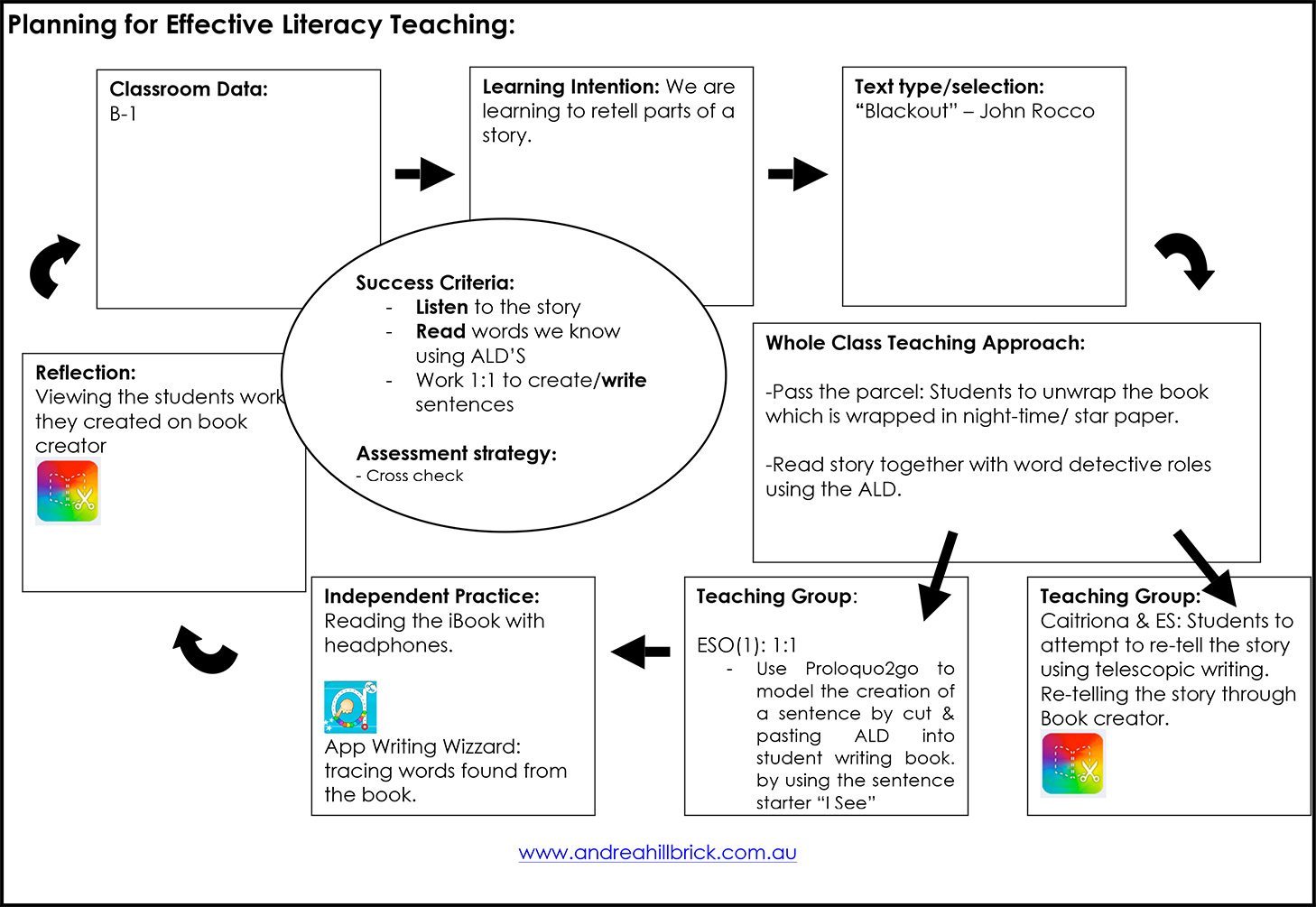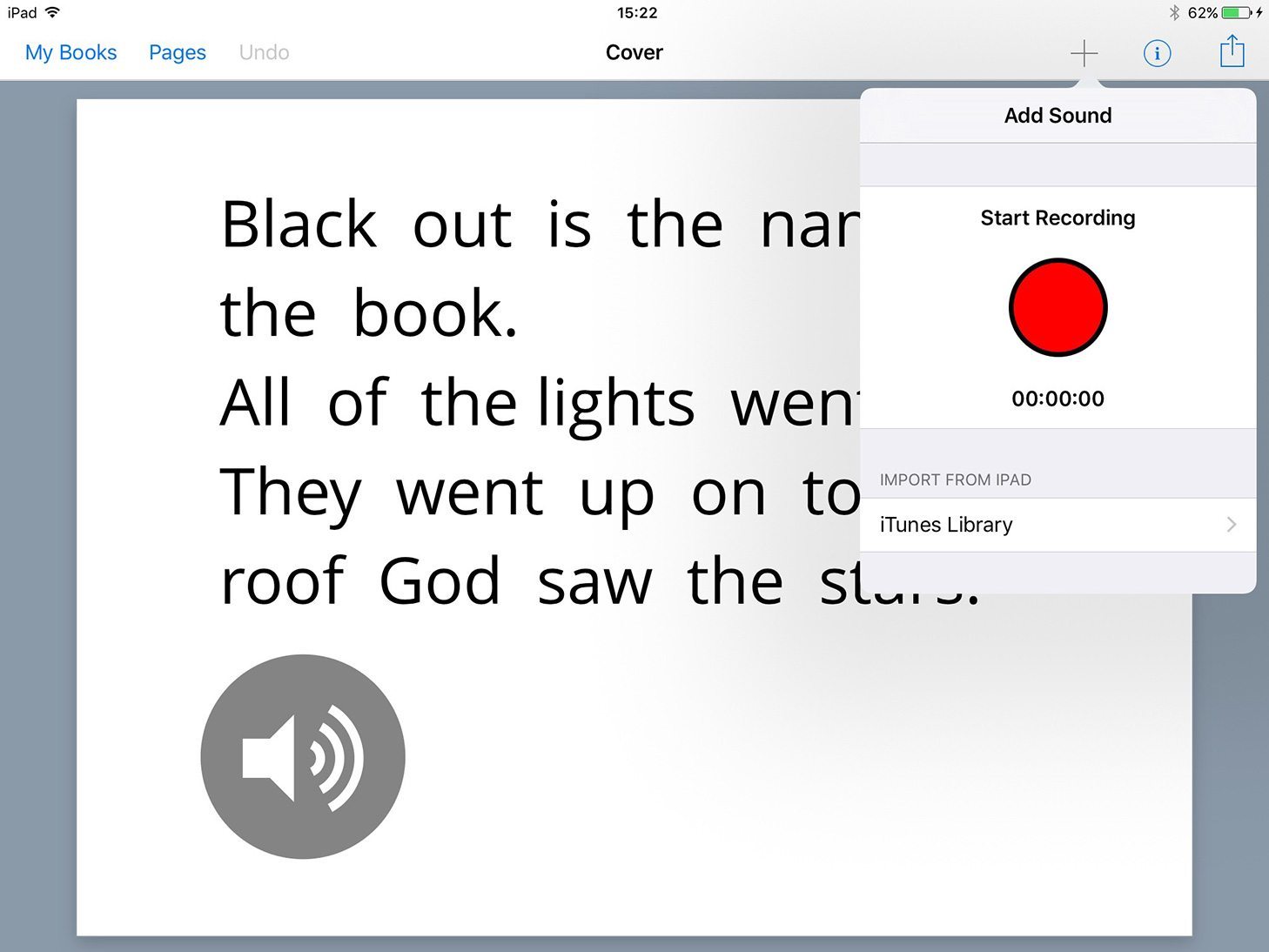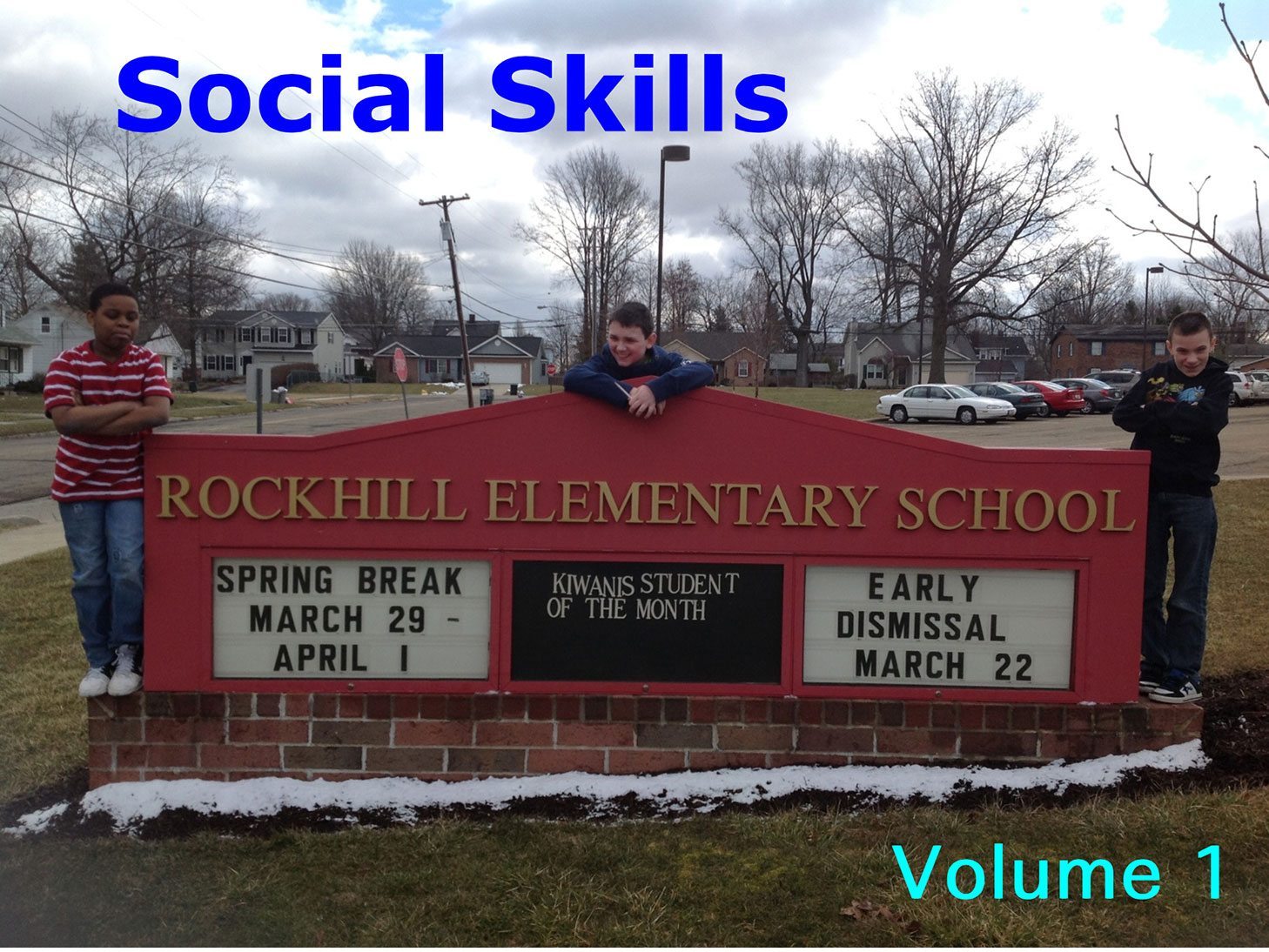Rising up to the challenge of teaching students who have difficulty communicating their ideas, how can creating ebooks help?
Roughly 80% of our students are currently non-verbal with both intellectual and physical disabilities. Our students sit on an IQ of less than 50 and over the last 6 months we have implemented a 1:1 iPad program.
My role as a coach is to support all teachers and classroom aides to develop their skills in effectively using iPad apps within their teaching and learning.
This post offers a case study on how we solved the challenge of teaching a new topic with ebooks.

Night & Day
Each term our teachers sit together and work through a matrix on what Unit Topic they will be teaching over the following 8-12 weeks. Term 3 saw the topic ‘Night & Day’ being taught across our Primary Learning Centre. Like every other school, books can be the “hook” into our student’s minds but the challenges we face at our school are a little bit different.
Our challenges:
- Large populations of our students are unable to read.
- 80% of our students are unable to speak or communicate their ideas.
- Most of our students require consistent 1:1 assistance to complete a learning task across all learning domains.
Being aware of these challenges helped us have open, professional discussions about possible solutions. Having worked with the Book Creator app for over three years, we agreed it was a way forward that could potentially transform the instructional practice of teachers within our Primary Learning Centre.
Our solutions:
- Teachers to collectively convey the students’ interests and hobbies. The aim: engagement & independent learning.
- Teachers to decide on what books they would be using over the term, which reflected on student interest, age appropriateness and level. To help with this, I created a Unit Topic matrix on literacy, numeracy and sensory ideas, which incorporated the use of iPad apps (see below). As our teachers hadn’t used the iPad before, the document became a way for teachers to add their own ideas and apps they had located that they believed were suitable for their students. This in turn facilitated a collaborative and sharing network on ideas and iPad apps.

- For me, the coach, to demonstrate lessons across various settings (e.g. high complex needs classrooms and high functioning classrooms). Show how Book Creator can be implemented within the classroom to:
- enable 1:1 learning opportunities
- attempt to gain an understanding of the students needs & wants
- establish a differentiated learning environment.

The story behind the book
The implementation of 1:1 iPads was a new teaching and learning concept for most of our teachers. In order to support them, it was agreed that I would make a series of ebooks using Book Creator based on the books the teachers had chosen for their class.
As our teachers worked in teams it was agreed I would create 5 books, spilt across the teams and the teachers would then swap over the books and resources. This became an effective way of utilizing resources and provided some excellent teamwork across the Primary Learning Centre.
The teachers had decided on the following books:
- Blackout: John Rocco
- Goodnight Andrew: Guido Van Genechten
- Oscar and the Moth: Geoff Waring
- Time to wake up: Susan Hellard
- Night Monkey Day Monkey: Julia Donaldson
The teachers provided feedback that their students were interested in music, animals and had a basic understanding of symbols, which would enhance their reading abilities. So I set about creating my first book, Blackout.

A few years ago, as a classroom teacher of high complex needs students, I had created a Blackout ebook relating to the topic of Light. However, Book Creator has changed a lot since then and as I had previously saved it to iTunes, I was able to re-install and edit the book onto my iPad to make it more engaging and interactive.
How to retrieve a deleted book
Creating the book
Once I had re-downloaded the book I set about adding in Symbolstix symbols from the app Proloquo2go. This involved identifying the main words or sentences students would be inclined to pick up on from the text.
Once these were identified I typed the word / sentence into Proloquo2go, took a screenshot, edited it and then inserted the picture into Book Creator. Once inserted, I added my voice and used the hidden sound icon. Yes! One box ticked!!

The other aspect I now had to implement was music. Music is a very personal choice and so I tried my best to negotiate with the idea of choosing between student interest, the content of the book and age-appropriateness.
As I couldn’t choose, I attempted to merge all three concepts into the book. Could I find videos that students were engaged in and brought across the content of Night & Day at the same time? The answer – YES!!
Using iTunes to import video content
Using iTunes, I bought the music videos I wanted to use in the ebook that linked with the Blackout book. Once I purchased these videos I transferred them from my iTunes account on my Mac and sent them to my iPad Mini using AirDrop.
From there I used Book Creator to insert the videos into a particular page. For example, one of the pages relates to having a street party, so I thought the song Uptown Funk was appropriate as its video is a street party and it was popular with the students at the time.
I began placing relevant videos amongst the text and attempted to differentiate the book by placing various content such TV shows which also can be purchased on iTunes into the book.
Using the book in the classroom
Now the book had been made, it was now time to implement its’ use within the classroom. I sat with the teachers I was going to work with and discussed the lesson plan and how it may engage students allowing for differentiated learning tasks and 1:1 instruction.
My first classroom demonstration within the Primary Learning Centre was with a group of 12 students whose literacy levels ranged from Stage B to Level 1 and two classroom aides.
The hook:
The hook for engaging students within a book is in my opinion, one of the most important aspects of a literacy lesson. I used the old fashioned game of pass the parcel without music and placed the book in a massive box with it addressed to the class.
The excitement was palpable – the students couldn’t wait to unwrap the parcel. As they were becoming word detectives, I placed a word that featured in the Blackout book using Symbolstix within each layer – the aim: for students to identify the word when we collectively read the book via the interactive TV.
As the words were found amongst each layer, I wrote these on the portable whiteboard, which was to be used during our writing session with Book Creator. Once we completed reading the book as a group we split into two separate groups.
Making our own books
Twelve students now split into two groups of six. The first group of six students was given two differentiated tasks while one student worked 1:1 with the classroom aide.
Group 1 tasks
- Two students to complete a writing task of words found in the Blackout book using the app Writing Wizard.
- Three students to independently read the ebook Blackout.
 Main task
Main task
One student to use the Aided Language Display to describe what they see on a page by using sentence starter “I See”. The classroom aide to model the sentence using the app Proloquo2go.
Group 2 tasks
- Three students to independently read the ebook Blackout.
- Two students to work 1:1 with the teacher and classroom aide to write sentences using telescopic writing to re-tell the story.
The students really enjoyed adding their sentences to their book and they quietly whispered into the record button to record their voices. However, the most powerful impact Book Creator had was in our reflection.
Using Air Server, I displayed all the student books onto the TV at the same time. Students were amazed at their work being shown on the screen and it created such excitement!

Reflection
Without the use of Book Creator, highly engaged, differentiated learning would not be possible within our classrooms. The students are motivated, engaged and above all, enjoy reading a book that has been tailored to suit their needs. Students are now working independently as they are able to easily navigate through ebooks.
We’ve also found that successful 1:1 iPad implementation means integrating the old with the new. Through effective differentiation of Book Creator our students are now eager to read, eager to share and above all engaged!
Caitriona Tynan is an iPad and Proloquo2go coach at a Special Developmental School in Melbourne, Australia.









3 Comments on “Increasing student engagement with Book Creator in Special Education”
Having worked alongside Caitriona for a number of years I can personally vouch for her passion and enthusiasm in assisting students to access and succeed in all curricular areas. The ideas that she has shared are truely tried and tested. They have been proven to engage and excite learners and allow them to access books, writing and documents that were previously inaccessible to them. Definitely worth putting in a little time and effort, the rewards will speak for themselves.
Great work Caitriona Tynan! Will it be possible to share with me your lesson plans and ibooks like the one you have here about literacy?
I am putting together resources/ lesson ideas on how to use the iPad in the classroom and I found your work very interesting! :)
Hi Chrissy,
Sure no problem at all! Please feel free to touch base with me via email: [email protected]